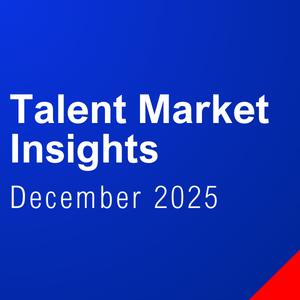
As 2025 comes to a close, many employers are asking an important question: How do we make our workforce stronger for next year?
Wages are beginning to stabilize, but that doesn’t mean hiring and retention will suddenly get easier. Labor supply remains uneven, compliance rules are still shifting, and most teams are doing more with less. Preparing for 2026 starts with taking a closer look at what’s working — and what might quietly be costing you.
The past few years have tested even the most resilient workforce plans. But those same lessons can help shape a smarter, more adaptable approach for the year ahead.
Here are three ways HR and operations leaders can prepare for what’s next.
1. Rethink pay strategy with purpose
After several years of steady wage growth, pay increases are starting to slow. But recent data shows the demand for skilled industrial talent remains high.
Small, well-placed adjustments — especially in critical or hard-to-fill roles — can make a big difference. A data-driven pay review helps ensure your compensation strategy attracts and retains the right people without over-spending where the market has already cooled.
Read more: What 2025 Wage Trends Tell Us About the Year Ahead
2. Strengthen stability through compliance and communication
Evolving employment laws and new reporting requirements continue to add complexity for employers. Staying compliant isn’t just a legal box to check — it’s part of protecting your brand, your people, and your margins.
Clear communication with internal teams and partners helps ensure alignment and reduces the risk of last-minute surprises. Taking time now to review processes and confirm compliance details can prevent costly missteps later.
Explore related insight: 3 Workforce Challenges Leaders Will Face in 2026
3. Build flexibility into your staffing model
Leaner teams and unpredictable labor supply have made adaptability a competitive advantage. The companies best positioned for 2026 aren’t necessarily those hiring the fastest — they’re those ready to pivot when needs change.
That means understanding which roles require stability, which can flex with demand, and having the right staffing partner to help you scale up or down efficiently. A strong partnership can give you access to skilled workers faster, reduce administrative strain on HR, and keep production moving when business conditions shift.
Related read: 5 Mistakes to Avoid When Choosing a Staffing Agency
Building Staying Power
Future-proofing your workforce isn’t about predicting every change — it’s about being ready to adapt when change happens. The employers who thrive in 2026 will be the ones connecting the dots between pay, scheduling, and staffing so their teams stay strong and supported no matter what the year brings.
A big part of that stability comes down to partnership. The staffing agency you choose has a direct impact on retention, compliance, and how much time HR spends managing issues. The right partner doesn’t just fill jobs — they help you strengthen your workforce and free up time to focus on your people and business.
If you’re re-evaluating your partnerships or want to see how your current provider measures up, our Staffing Agency Evaluation Checklist can help you assess what’s working, what’s not, and where you can gain an edge heading into the new year.



